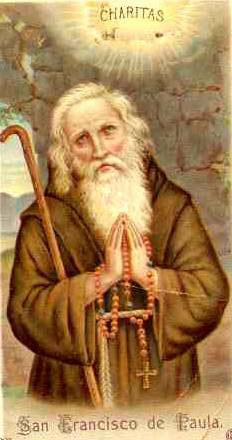We ask you, urgently: don't scroll past this
Dear readers, Catholic Online was de-platformed by Shopify for our pro-life beliefs. They shut down our Catholic Online, Catholic Online School, Prayer Candles, and Catholic Online Learning Resources essential faith tools serving over 1.4 million students and millions of families worldwide. Our founders, now in their 70's, just gave their entire life savings to protect this mission. But fewer than 2% of readers donate. If everyone gave just $5, the cost of a coffee, we could rebuild stronger and keep Catholic education free for all. Stand with us in faith. Thank you.Help Now >
Merneptah I
FREE Catholic Classes
(1234?-1214 B.C.), the fourth king of the nineteenth Egyptian dynasty and the supposed Pharaoh of the Exodus, was the thirteenth son of Rameses II whom he succeeded in or about 1234 B.C., being then long past middle age. His rule lasted some twenty years, during which he carried on considerable building operations in the Delta, and notably at Tanis (Zoan), where, indeed as elsewhere, he usurped a number of some of his predecessors' monuments. His original works are comparatively few and insignificant. His name is constantly found on the monuments of his father ; it appears also in Nubia, and in the old quarries in the Sinaitic peninsula. In his third year, he quelled a revolt to the northeast, possibly excited by the Hittites' and in his fifth year, he repelled an invasion of Egypt by the Lybians and their allies, which victory is boastfully described on a black granite stela found in 1896 in his funeral temple at Thebes, and bearing the earliest known reference to Israel. He is commonly regarded as the Pharaoh of the Exodus on the following grounds.
- On the one hand, Egyptian discoveries have shown that Rameses II founded the cities represented in Exodus., i, 11, as built by the oppressed Hebrews, and therefore point to him as the Pharaoh of the oppression.
- On the other hand, Ex., ii, 23; iv, 19, imply that the immediate successor of that Pharaoh was on the throne when Moses returned to Egypt where he soon delivered his people. Whence it is not unnaturally inferred that Merneptah I, Rameses son and successor, is the Pharaoh of the Exodus.
The chief objection to this view is that it seems to contradict the final strophe of Merneptah's "Hymn of Victory" over the Lybians inscribed on the granite stela already referred to. After relating the subjection of Chanaan and of Ascalon by the Egyptians, this inscription adds: " Israel is spoiled, his seed is not; Palestine has become a widow for Egypt." How can Merneptah I be the Pharaoh of the Exodus since according to the obvious meaning of this passage, the Israelites when defeated by him were already settled in Palestine, a settlement which as we know from the Bible was effected only after a forty years' wandering and therefore after Merneptah's death? This difficulty has led many scholars to consider an earlier king as the Pharaoh of the Exodus, while others have answered it in various ways.
The following is its most probably solution. Scholars not expecting the exact truth to be told in an Egyptian inscription concerning the Exodus disaster, and noticing that in the final strophe of Merneptah's "Hymn of Victory" an actual boastful misrepresentation of his relation to the Hittittes, precedes almost immediately the distinct reference to Israel as "spoiled", will readily think that the glory therein claimed by Merneptah over the Israelites is to be taken as a boastful misrepresentation of what really happened to him as the Pharaoh of the Exodus. Merneptah's mummy was discovered in 1896 and identified in 1900. The find does not disproved the identity of that monarch with the Pharaoh of the Exodus, for nothing in the Sacred Text requires the admission that Pharaoh pursued the Israelites in person, or was drowned as a result.
Join the Movement
When you sign up below, you don't just join an email list - you're joining an entire movement for Free world class Catholic education.

-

- Stations of the Cross
- Easter / Lent
- 5 Lenten Prayers
- Ash Wednesday
- Living Lent
- 7 Morning Prayers
- Mysteries of the Rosary
- Litany of the Bl. Virgin Mary
- Popular Saints
- Popular Prayers
- Female Saints
- Saint Feast Days by Month
- Pray the Rosary
Pope Francis’ April Prayer Intention: Using Technology to Strengthen Human Connections
Finding Peace Through Prayer in a World of Worry
Trump Administration Withholds Federal Grants from Planned Parenthood Over DEI and Civil Rights Concerns
Daily Catholic
 Daily Readings for Wednesday, April 02, 2025
Daily Readings for Wednesday, April 02, 2025 St. Francis of Paola: Saint of the Day for Wednesday, April 02, 2025
St. Francis of Paola: Saint of the Day for Wednesday, April 02, 2025 Prayer for God's Help in Daily Actions: Prayer of the Day for Friday, March 14, 2025
Prayer for God's Help in Daily Actions: Prayer of the Day for Friday, March 14, 2025 Daily Readings for Tuesday, April 01, 2025
Daily Readings for Tuesday, April 01, 2025 St. Hugh of Grenoble: Saint of the Day for Tuesday, April 01, 2025
St. Hugh of Grenoble: Saint of the Day for Tuesday, April 01, 2025- To Perceive Animals as God's Gifts: Prayer of the Day for Thursday, March 13, 2025
![]()
Copyright 2025 Catholic Online. All materials contained on this site, whether written, audible or visual are the exclusive property of Catholic Online and are protected under U.S. and International copyright laws, © Copyright 2025 Catholic Online. Any unauthorized use, without prior written consent of Catholic Online is strictly forbidden and prohibited.
Catholic Online is a Project of Your Catholic Voice Foundation, a Not-for-Profit Corporation. Your Catholic Voice Foundation has been granted a recognition of tax exemption under Section 501(c)(3) of the Internal Revenue Code. Federal Tax Identification Number: 81-0596847. Your gift is tax-deductible as allowed by law.


 Daily Readings for Wednesday, April 02, 2025
Daily Readings for Wednesday, April 02, 2025 St. Francis of Paola: Saint of the Day for Wednesday, April 02, 2025
St. Francis of Paola: Saint of the Day for Wednesday, April 02, 2025 Prayer for God's Help in Daily Actions: Prayer of the Day for Friday, March 14, 2025
Prayer for God's Help in Daily Actions: Prayer of the Day for Friday, March 14, 2025 St. Hugh of Grenoble: Saint of the Day for Tuesday, April 01, 2025
St. Hugh of Grenoble: Saint of the Day for Tuesday, April 01, 2025

